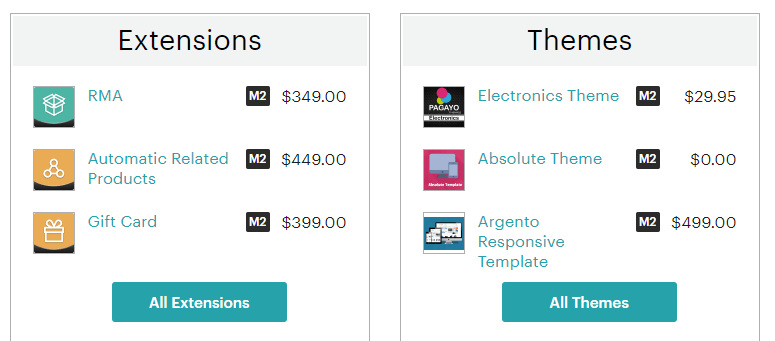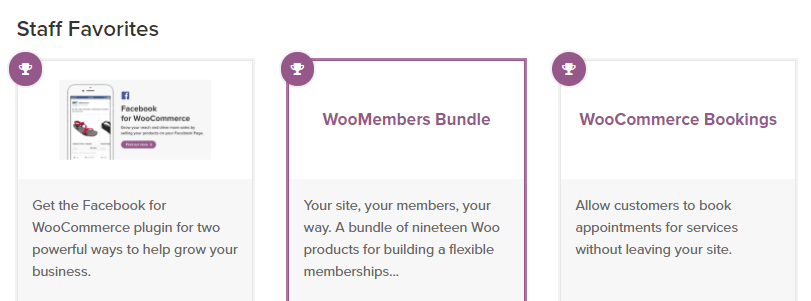- Aug 25, 2017
 0
0- by A2 Marketing Team
When you’re setting up an e-commerce store, your choice of platform is key. If you don’t have access to all the features you need, you can lose out on potential sales. Plus, switching to a new platform is often a hassle.
Magento and WooCommerce are two of the best-known names when it comes to self-hosted e-commerce solutions. The former is known as one of the best enterprise options, whereas the latter is an excellent choice for WordPress-powered stores of all sizes.
In this article, we’ll introduce you to both platforms, explain what features they offer, and discuss how much it costs to use each one. Then we’ll talk about how to extend their functionality and choose the right solution for you. We’ve got a lot of ground to cover, so let’s jump right in!
An Introduction to Magento and Its Key Features
Magento has a built a reputation for itself as a go-to solution for enterprise-level e-commerce stores. However, that doesn’t mean its Open Source version isn’t a solid option for smaller-scale operations.
Setting up a Magento store isn’t overly complicated. As a self-hosted platform, you’ll need to find a good hosting provider and install the solution yourself via cPanel (or have someone else do it for you). The tricky part is learning how to configure your store and get it ready for primetime. Magento offers a lot of customization options, which means that despite its sleek interface, it has a bit of a learning curve.
To be fair, the same could be said of any other e-commerce platform if you don’t have any experience running a website or an online store. As long as you’re willing to spend some time going through Magento’s documentation and tweaking your store so it’s just right, you should be fine even if you’re a total beginner.
Key Features:
- Enables you to receive in-depth analytics reports.
- Lets you take advantage of multiple advanced features for your product catalogs, including wish lists, reviews, and more.
- Offers the option to import and export batches for your products, to save time.
- Makes it easy to set up customer accounts with detailed order information and purchase histories.
- Supports multiple payment and shipping options.
- Provides several built-in tools to optimize your store for search engines.
An Introduction to WooCommerce and Its Key Features
Technically, WooCommerce is a WordPress plugin rather than a full-blown platform. However, it is powerful, comprehensive, and offers all the features you need to create a thriving online store. Even with all that, it still manages to keep things simple, thanks to its WordPress roots.
If you’re already familiar with WordPress, implementing WooCommerce should be simple (if not, getting started with WordPress is also fairly straightforward). Just install and activate the plugin as you would any other, and then check out its onboarding wizard to begin the setup process. It should only take you a few minutes to go through all the options, and this will start your store off on the right foot.
Keep in mind that the onboarding wizard doesn’t cover all of WooCommerce’s settings. You’ll probably still want to check out the plugin’s documentation if you don’t want to miss anything. However, the learning curve isn’t as steep as it is with Magento. That makes it a solid option for those of you who want to set up a store quickly.
Key Features:
- Is built on top of WordPress, which makes it highly user-friendly.
- Offers optimization for mobile devices.
- Integrates with other types of WordPress content, such as posts.
- Supports multiple payment and shipping options.
- Enables you to add various types of products to your store, including digital and group offers.
- Provides you with basic analytics features.
The Costs of Setting Up Magento and WooCommerce Stores
Both platforms we’ve introduced in this post are self-hosted and open source. That means they’re free for anyone to download and modify, but you’ll still need to pay for hosting to set up a store using either one.
Website hosting varies in price depending on which provider you use and which type of hosting you need. Our shared hosting plans are usually a good place to start if you want to keep costs low:
You’ll also want to go with a host that offers strong performance. After all, people don’t want to shop on a slow online store, so it isn’t smart to cut corners. The more performance you want, the more you’ll generally have to pay for hosting, but you can always upgrade plans when necessary to save on initial costs.
Moving on, both Magento and WooCommerce enable you to improve your store’s functionality using extensions. Each platform offers free and premium extensions, and some of the most extensive options can be quite pricey:
If you want to add multiple extensions to either platform, chances are you’ll have to spend a few hundred dollars to do it. Professional-level extensions do tend to be a lot more expensive for Magento, so keep that in mind before settling on that platform.
How to Add More Features to Magento and WooCommerce Stores
As we mentioned in the last section, both Magento and WooCommerce enable you to expand their feature set through extensions. Magento offers over 1,520 extensions in its Marketplace, covering everything from accounting features to site optimization:
WooCommerce is no slouch when it comes to extensions either. The platform’s official extension database lists over 300 options, but you can find more if you look in WordPress plugin directories such as CodeCanyon:
Once you’ve selected the extensions you want, both platforms make the process of downloading and installing these additions straightforward.
Which Platform Is Best for You?
So far we’ve covered a lot of ground, so let’s take a minute to review each platform and its major selling points:
- Magento: This platform’s flexibility, scalability, and broad set of built-in features make it a solid option for large-scale e-commerce websites. If you don’t mind a bit of a learning curve, you can also use it to set up more modest stores. Plus, you can add nearly any functionality you need via extensions. Do keep in mind that some of these extensions are quite expensive, so take a look at them beforehand to check out if you’ll need any of those features.
- WooCommerce: If you’re looking for ease of use, WooCommerce is the obvious winner in that area. Its integration with WordPress makes it easy to set up and start using the platform right away. As far as we’re concerned, WooCommerce is a more logical option for small-to-medium-sized operations. It doesn’t offer quite as many extensions as Magento, but they’re often more reasonably priced, and there is a large community of developers creating new themes and plugins for WooCommerce stores every day.
Overall, both platforms actually have a lot in common, and can be well adapted to many types of stores. As long as you have a good idea of what features you need upfront, and follow the advice above, you shouldn’t run into any major issues with your pick.
Conclusion
Both Magento and WooCommerce are excellent e-commerce platforms. Each offers just about all the features you’ll need for a successful online store. However, there are a few fundamental differences between the two platforms, and knowing what they are is important if you’re struggling to pick one. Of course you can always migrate between the platforms if necessary.
Let’s recap what each of these platforms can bring to the table for a new e-commerce store:
- Magento: This highly scalable and professional platform is a great option for large e-commerce stores.
- WooCommerce: This powerful, easy-to-use WordPress plugin is ideal for small-to-medium sized operations.
Image credit: Pixabay.
















